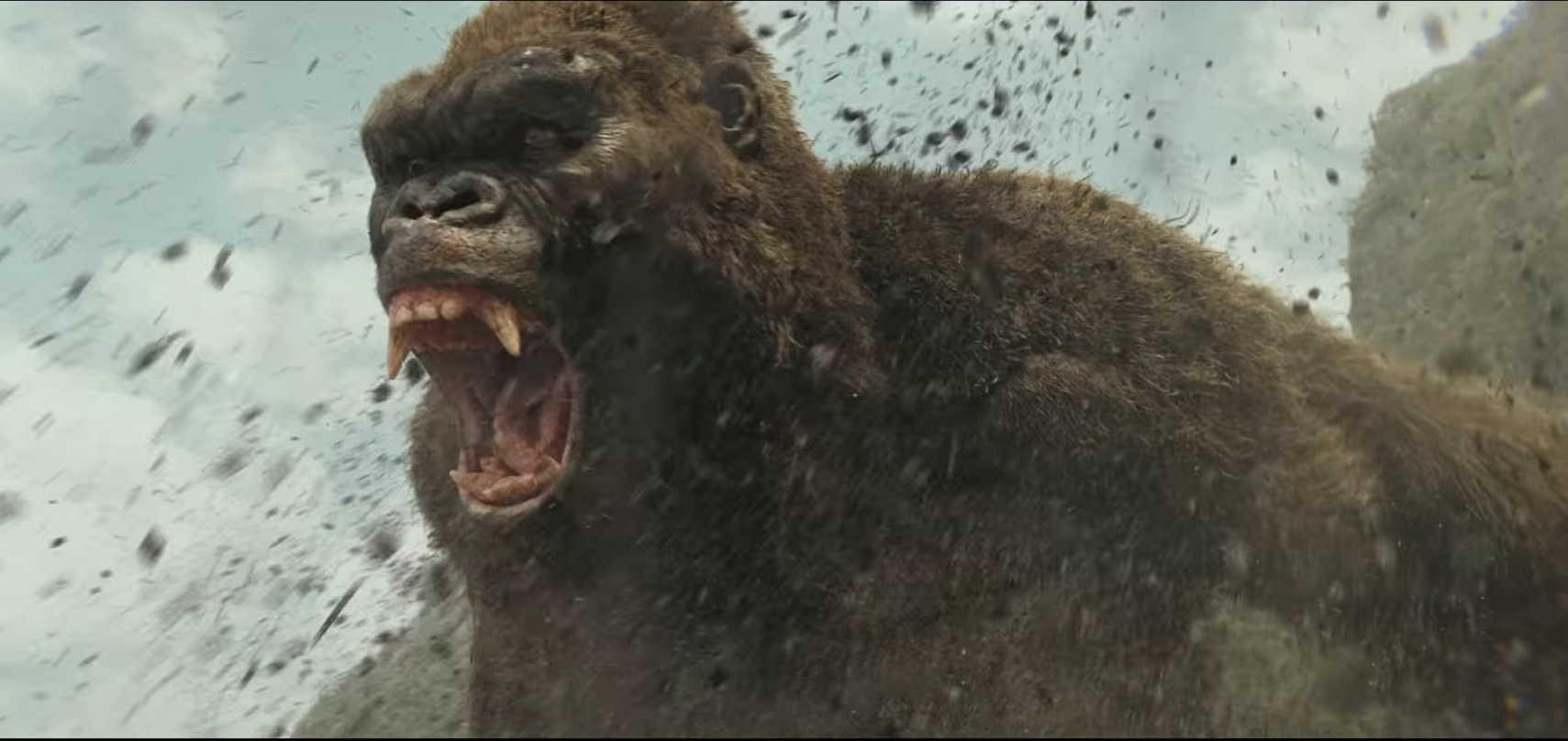The star-studded cast of the latest King Kong film delivers strong performances backed by jaw-dropping CGI moments — all while communicating an anti-war message.
War is bad: hot take, right? This message is in no way new, but Kong: Skull Island tells this story using humongous CGI beasts and an ensemble of morally questionable characters. More importantly, it tells the story in a new way.
The plot includes crack-pot scientists who turn out to be right, a military leader hell-bent on revenge, a peace-seeking photographer and a castaway who has assimilated with the native population. Each of these characters and their motives are not original, but they are woven together in a unique fashion.
As Hank Marlow, John C. Reilly was incredibly human in a movie involving fantastic animals, reminding the audience why these lives are worth saving. With moments of humor and raw emotion, his performance was perhaps the best the film has to offer.
If it is not Reilly who delivers the strongest performance, then it was Samuel L. Jackson, who plays Preston Packard. Shit hits the fan in record time in this film, and the men Jackson loses define his experience on the island. He delivers a tremendous monologue on the story of Icarus as he and his fellow helicopter pilots are navigating an intense storm system. He then pulls out a pistol to threaten a fellow adventurer with the informality and ease like that of someone pulling out their iPhone.
The story succeeds in fitting two separate adventuring narratives that could each function as their own film plot — one leading to the group appreciating the bizarre world around them and the other having the group shoot everything that moves. Therein lies the heart of this anti-war narrative.
The reason the group even comes to the island of Kong is to survey the bedrock on which it sits. This requires dropping explosives and monitoring the seismic activity in a superb scene. With Jefferson Airplane’s “White Rabbit” (a song inspired by Alice in Wonderland) playing in the background, helicopter pilots grin as they drop explosives on an untouched, tranquil section of nature. Needless to say, the island’s inhabitants don’t like this.
And just like that, the adventurers have made an enemy and find themselves entwined in a conflict that goes beyond the comprehensible. The “enemy of my enemy is my friend” narrative gets flipped on its head as vengeance and ambition complicate the situation; the group finds themselves in a quagmire.
The film rushes the exposition, and dialogue packs cringe-worthy character development into short bursts. But all that seemed to be in an effort to get to the island as soon as possible. It’s hard to fault the writers for wanting this, but it took longer to warm up to the characters because of that. The writers know we aren’t here to watch soldiers interact on a military base. Still, the deaths of characters on the island are less powerful because we weren’t given enough time to get to know them.
Kong: Skull Island is a self-aware movie that never pretends to take itself too seriously. It thrives on giving the viewers what they want: spectacle, explosions, CGI beasts and strong performances from talented actors.




